Southern Africa - South Africa, Botswana, Zimbabwe, Zambia, Namibia
August 23 - September 15, 2016
Part One - Okavango Delta, Botswana
Page Four

Kids playing in the water on a Sunday morning
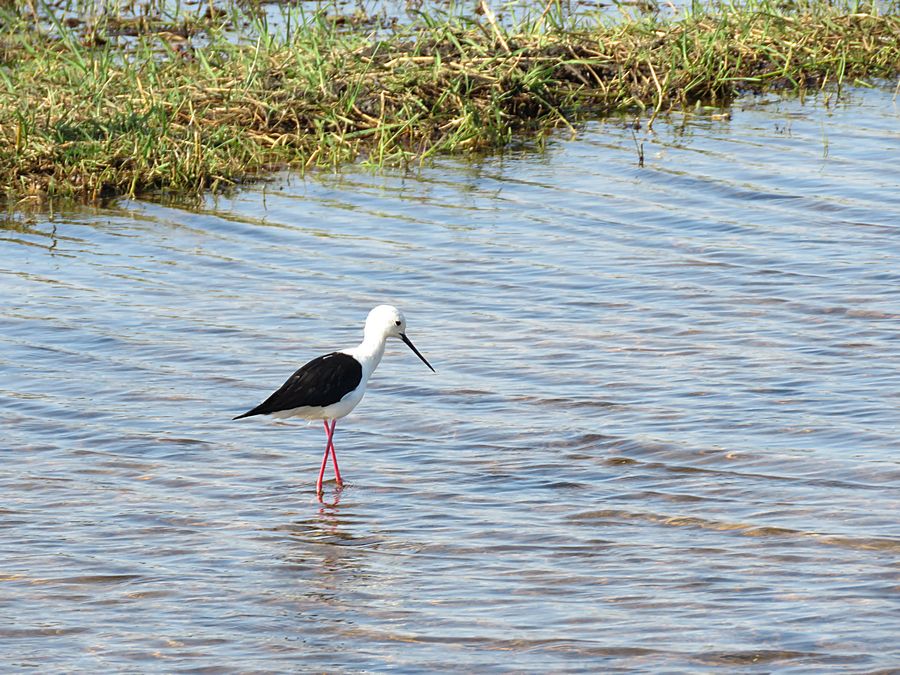
Black-winged Stilt - Slender black and white wader with
long red legs and a thin pointed bill. Often bends over to
probe the mud for worms and insect larvae. Prone to
seasonal movement dependent on water levels.

Another view of the black-winged stilt
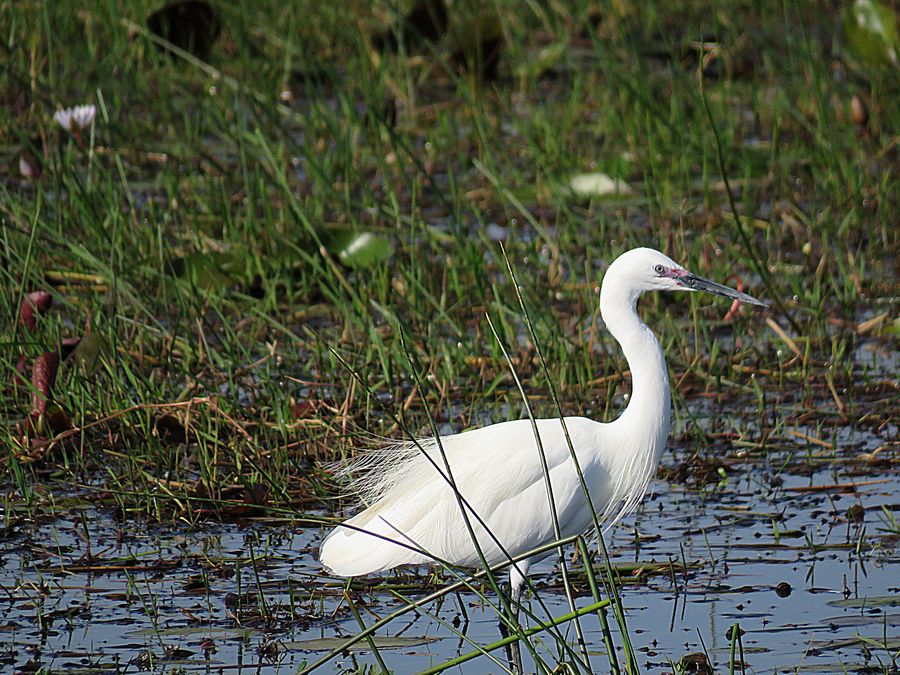
Great White Egret - All white with a long neck and black
legs and toes. Feeds on fish, frogs, and rodents.

Alen - one of our guides at the Delta. Here
we are about to embark on a motorboat to ride
through a main channel where there were massive
numbers of birds as well as crocodiles and hippos.
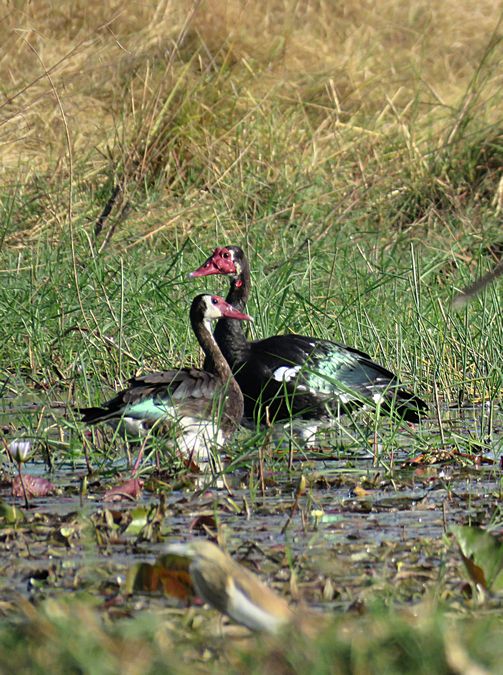
Spur-winged goose - Largest duck in Botswana. Male
is larger than female. Largely black with variable amount
of white on face. Bill and legs are pink. Males have red
facial skin extending beyond their eyes. Their diet consists
of grass and tubers.
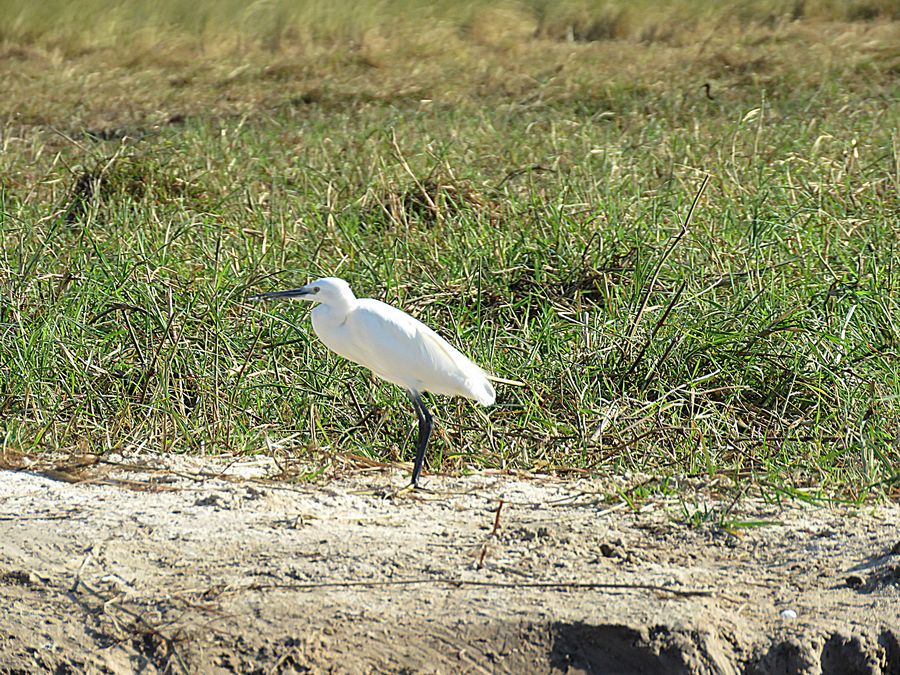
Little Egret - The bill is black. Seen in and around water,
often as the only member of its species amidst herons
and storks. Feeds on small fish, frogs, and insects.

African Darter, as noted earlier, often called snake birds,
because they swim in water with their heads up looking like snakes.
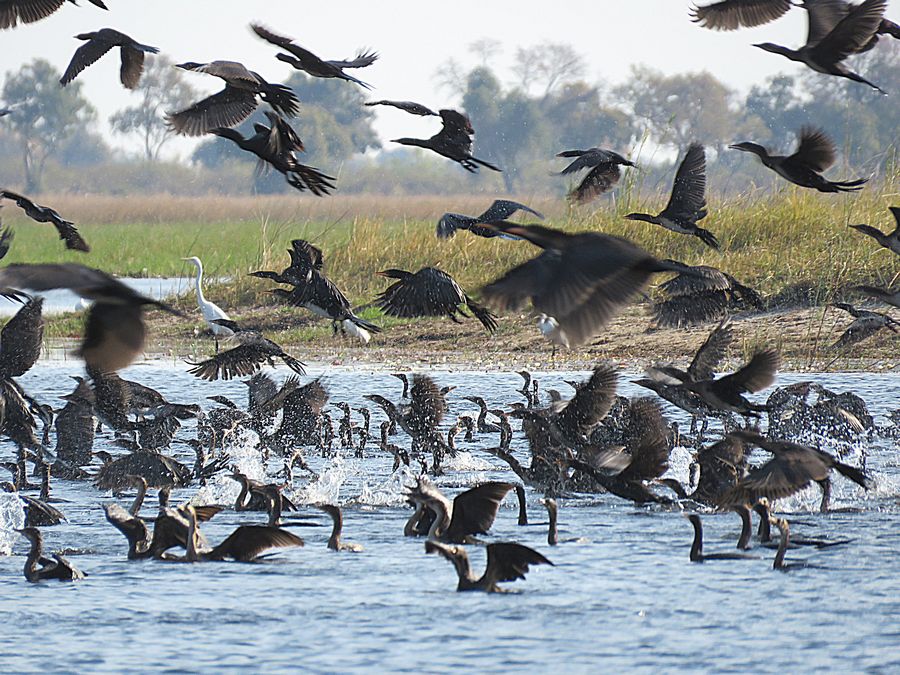
A variety of birds taking to flight, reacting to the sound
and movement of our motorboat.

Hippos in main channel. You can barely see one to
the left of the very visible hippo.


Egyptian Geese - large chestnut goose. Occurs in pairs
or small groups on floodplains. Feeds mostly on grass on
dry land.
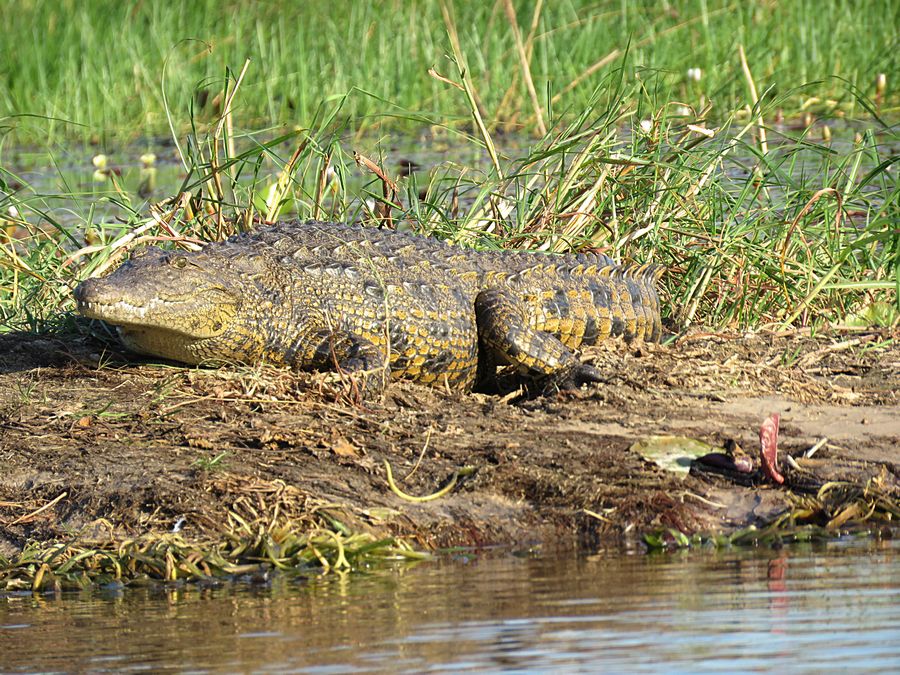
Nile Crocodile - massive aquatic predator that may live a
long time. Juveniles feed on small animals like frogs.
Older crocs take large fish and mammals up to the size of
antelope.

In the water, this species is an agile and rapid hunter relying on
both movement and pressure sensors to catch any prey unfortunate
enough to present itself inside water or near the waterfront. Out of water,
however, the Nile crocodile can only rely on its limbs, as it gallops
on solid ground, to chase prey. No matter where they attack prey,
this and other crocodiles take practically all of their food in an
ambush, needing to grab their prey in a matter of seconds in order
to succeed.
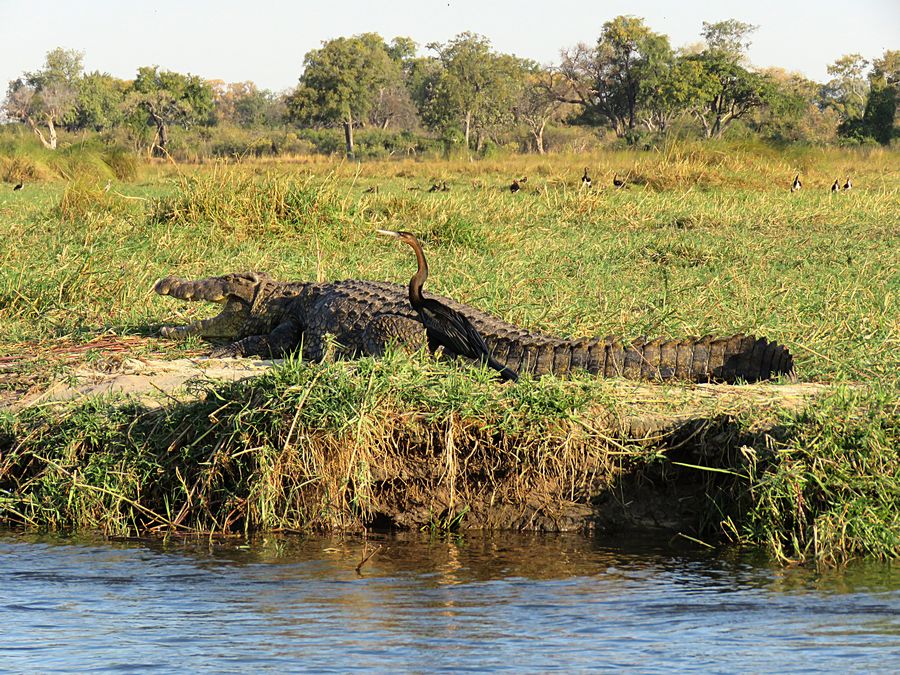
The Nile crocodile mostly hunts within the confines of waterways,
either attacking aquatic prey or terrestrial animals when they come
to the water to drink or to cross. The crocodile mainly hunts land
animals by almost fully submerging its body underwater.

Nile crocodiles normally dive for only a few minutes at a time, but
can swim underwater for up to 30 minutes if threatened, and if they
remain fully inactive, they can hold their breath for up to two hours.

Reed cormorant - black waterbird with a long tail. Its feathers
are not waterproof, so it regularly perches with wings outstretched
so that they may dry. Fish are caught underwater.

Knob-billed Duck - Has blue-green back and a
speckled face. The male is larger with a distinctive, fleshy
protuberance on the top of its bill that becomes enlarged
during breeding season. Gathers on floodplains and on the
fringes of rivers.
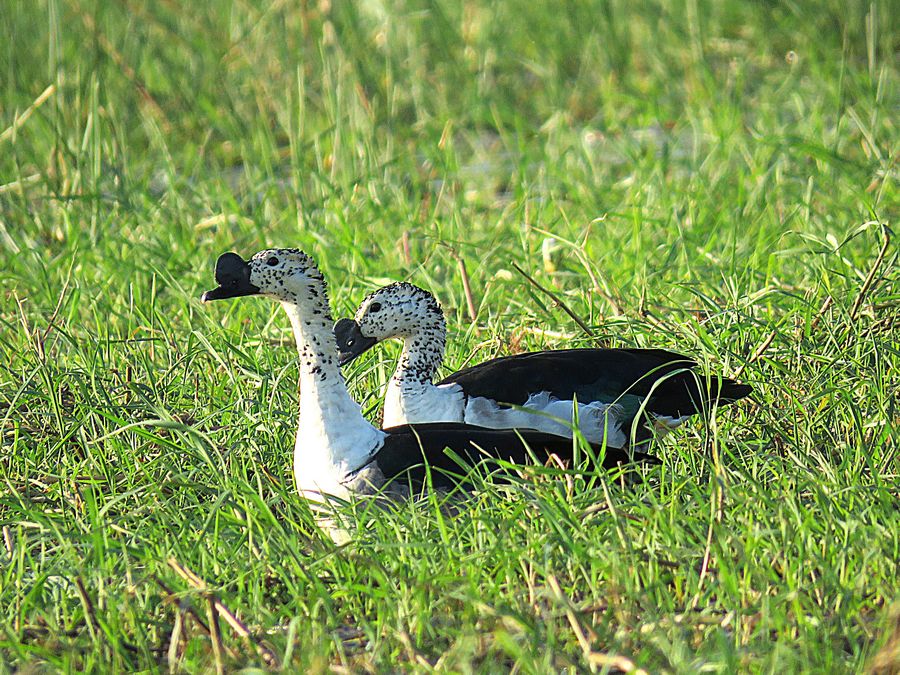
2 Knob-billed Ducks

Another huge crocodile

Pelican with little egrets

Gray Heron, Yellow-billed Stork, Eastern White Pelican, and Open-billed Stork
The gray heron has a white head and neck with a bold black streak that
runs above and behind the eye. Hunts for frogs and fish. The Eastern
White Pelican has an upper bill that is pink and a lower bill and pouch
that is yellow. The bright sun makes it hard to see the color. The open-
billed stork is dark, gray-black with a characteristic gap near the tip of
the bill.

This looks like a Yellow-billed Stork convention.
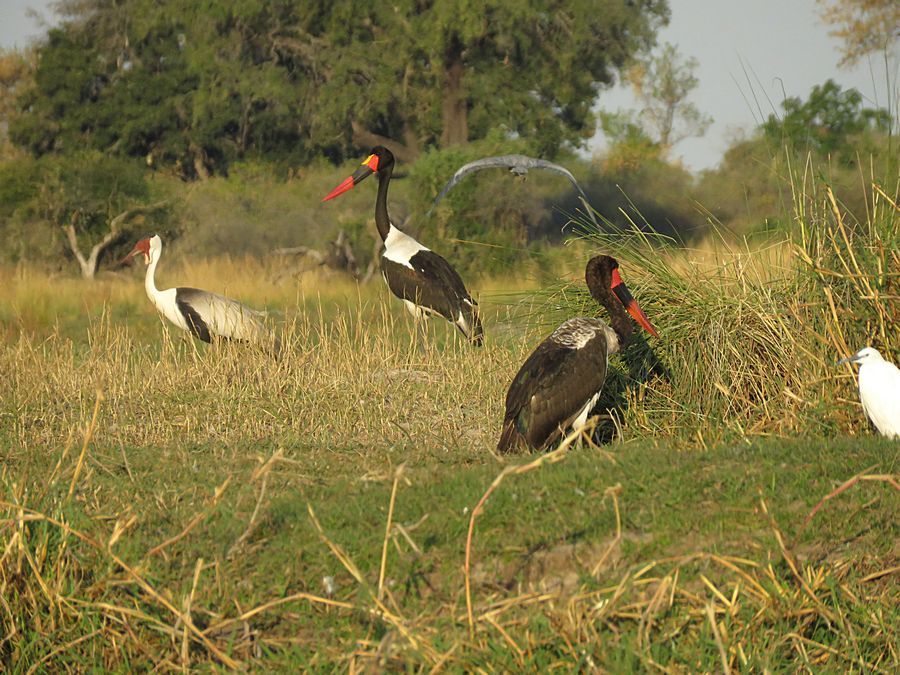
Saddle-billed Stork in the center - often seen in pairs. It is a huge stork
with a large red bill that is divided by a black bar. Feeds in shallow
water. Wattled crane on the left, a a bird of grasslands and wetlands. They
feed by pecking on the ground or probing mud for things like frogs, lizards,
seeds and grain.
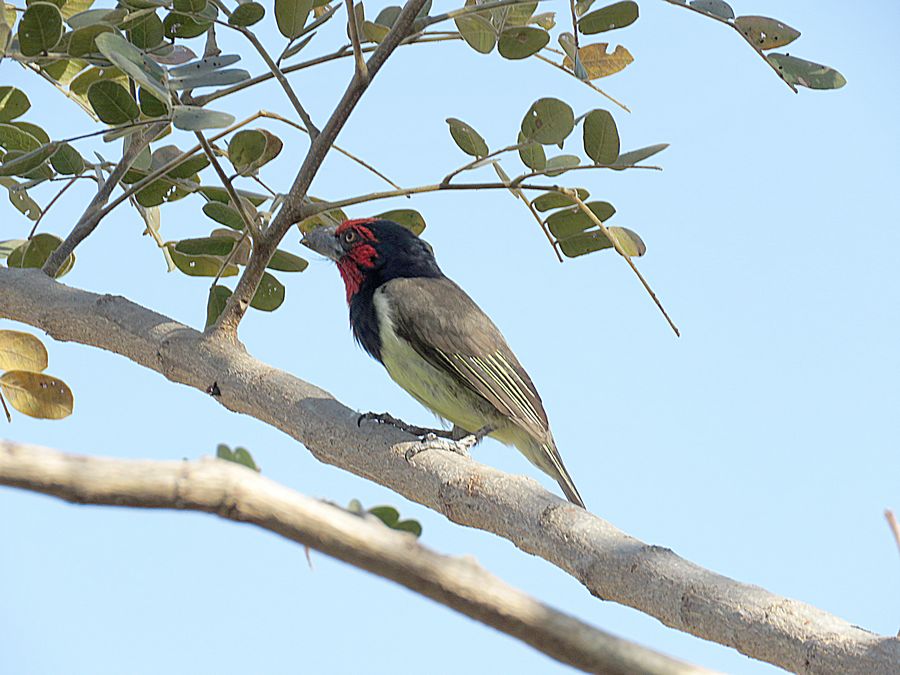
Black-collared Barbet in a tree outside my tent at the camp.
Has a crimson red face bordered by a black collar. The back
is olive green and underparts buffy yellow. Its favored food are
insects, berries and fruit.
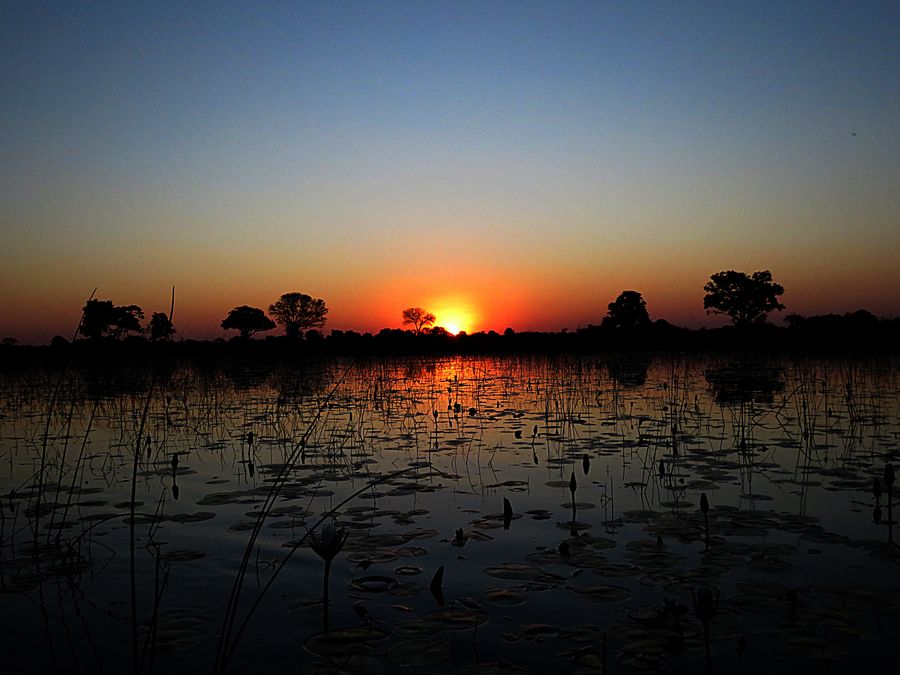
Sunset - Okavango Delta
On August 29, I flew on a 3 passenger bush plane to Maun, Botswana, then flew from
Maun to Johannesburg, South Africa, stayed overnight there, then the main
trip started
August 30. From Johannesburg, the main tour group flew to
Kruger National Park in South Africa.
Link to Part Two - Kruger National Park, South Africa
Pat's Home Page